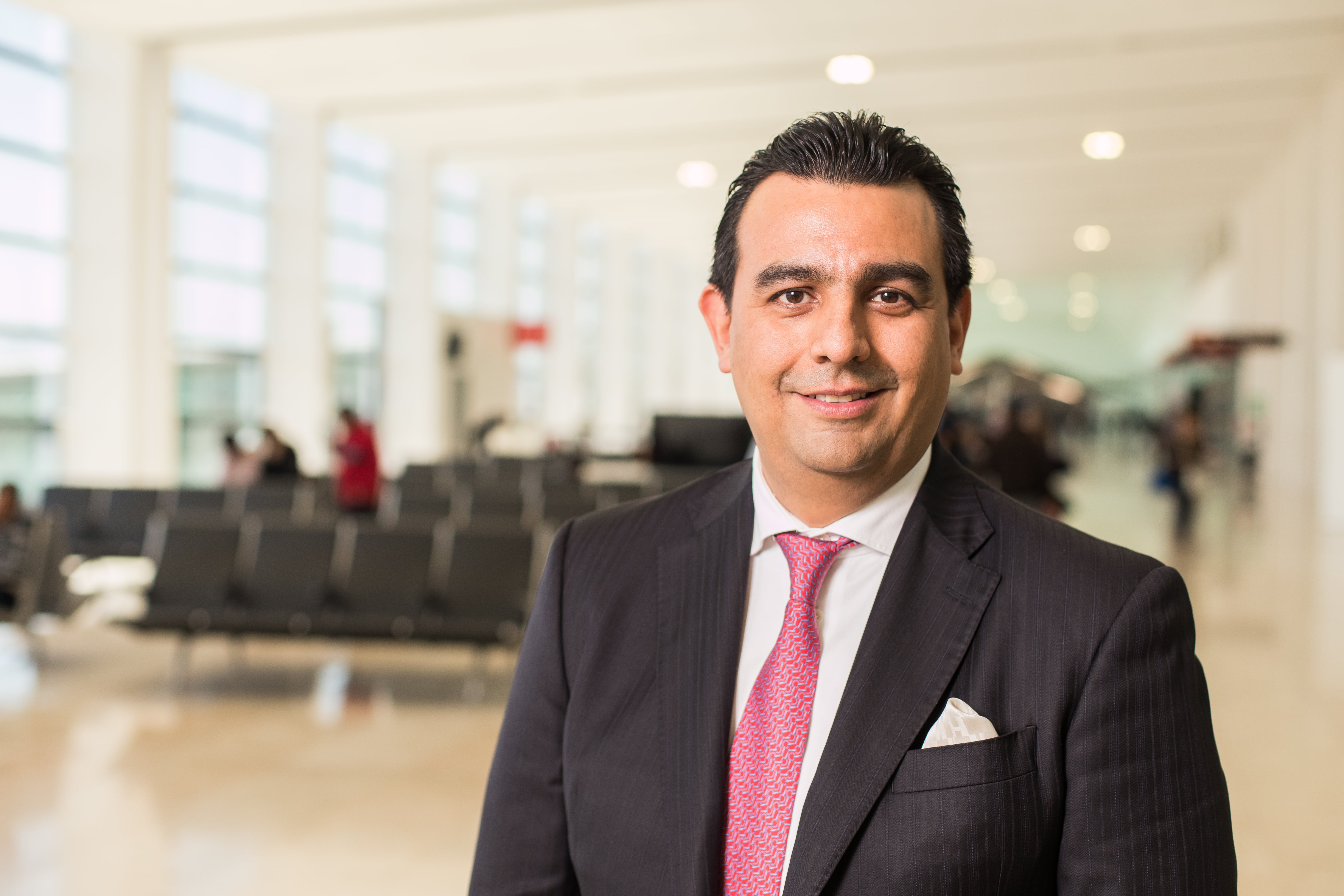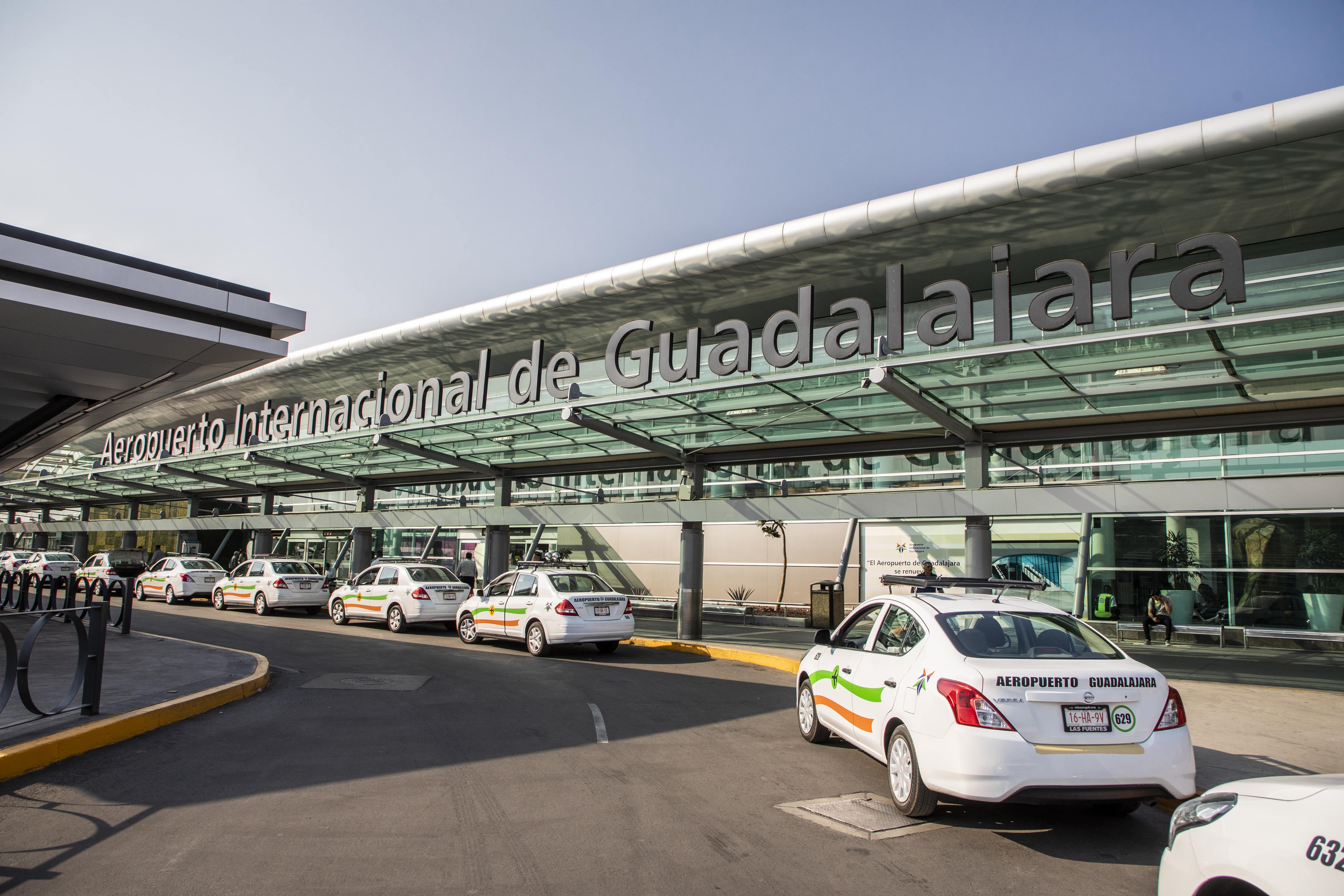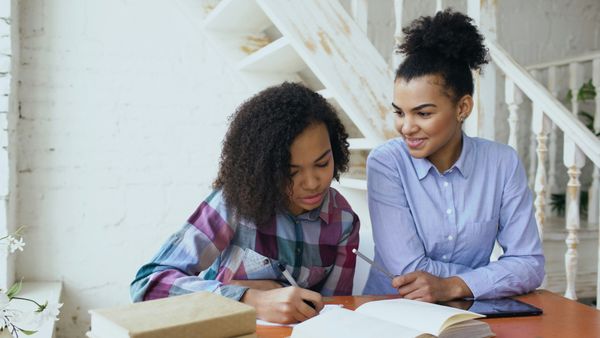I had the chance to sit down with Raúl Revuelta Musalem, the CEO of Grupo Aeroportuario del Pacífico (GAP), about Mexico's aviation industry. This is my second time interviewing Raúl: our previous discussion in August 2023 was about Tijuana International Airport (TIJ) and the future of Baja California's aviation sector.

Background on GAP
GAP is a Mexican company that operates 12 airports across western Mexico and two in Jamaica. It is Mexico's largest airport operator by passenger traffic, serving approximately 63.4 million passengers annually. GAP operates with 85% of its shares traded publicly and the other 15% held by a strategic partner, Aeropuertos Mexicanos del Pacífico.
GAP launched in 1998 as part of Mexico's plans to privatize its airports. The Mexican government saw privatization as a way to improve the quality and safety of Mexico's airport services. In February 2006, GAP completed its initial public offering on the New York Stock Exchange and the Mexican Stock Exchange with the "PAC" and "GAP B" ticker symbols, respectively.
GAP currently operates the following airports across nine states in western Mexico:
- Aguascalientes International Airport (AGU)
- Guadalajara International Airport (GDL)
- Hermosillo International Airport (HMO)
- La Paz International Airport (LAP)
- Guanajuato International Airport (BJX)
- Los Cabos International Airport (SJD)
- Los Mochis International Airport (LMM)
- Manzanillo-Costalegre International Airport (ZLO)
- Mexicali International Airport (MXL)
- Morelia International Airport (MLM)
- Puerto Vallarta International Airport (PVR)
- Tijuana International Airport (TIJ)

GAP additionally operates two airports in Jamaica: Norman Manley International Airport (KIN) in Kingston and Sangster International Airport (MBJ) in Montego Bay. The latter airport's ownership structure involves GAP being a majority stakeholder and Vantage Airport Group as a minority owner.
GAP will own and operate the Mexican airports until 2048 as part of a 50-year concession deal signed by the Mexican government in 1998. The company's twelve Mexican airports recorded a total of 56.5 million passengers in 2023, while the two Jamaican airports saw 6.96 million passengers in the same year. Monthly traffic has also been strong: all 14 airports combined saw 5.37 million passengers in January. All traffic figures include both international and domestic travelers.
Guadalajara, Tijuana, Los Cabos, and Puerto Vallarta are home to GAP’s busiest airports. These four cities are either major tourist destinations or centers for international business. Raúl mentioned that Mexico is witnessing a strong recovery in international passengers, which offsets the shortage of domestic seats in the Mexican market.

The Effects of Global Events on Mexico’s Aviation Industry
Mexico’s economy benefits from nearshoring, a business strategy involving companies moving their operations closer to their primary markets. Companies implement nearshoring to reduce transportation costs, deliver products to customers faster, and diminish the effects of adverse global events. Nearshoring is frequently in today’s discussions amid global issues such as rising U.S.-China tensions, the Russia-Ukraine war, and attacks by Yemen’s Houthi rebels on container ships in the Red Sea. Raúl said that nearshoring is happening in northern and central Mexico, with these regions attracting new industries and factories.
Boeing’s recent issues concerning its 737 MAX aircraft have also impacted Mexican aviation. Mexico’s flag carrier, Aeroméxico, temporarily grounded its 737 MAX 9 fleet for further inspection three days after a door plug blew off an Alaska Airlines 737 MAX 9 plane. Aeroméxico removed 19 jets from its fleet after the U.S. Federal Aviation Administration (FAA) ordered the grounding of over 170 737 MAX 9s worldwide. Although Volaris and Viva Aerobus were not affected by Boeing’s controversies, both carriers had to ground their Airbus A320neo planes due to issues surrounding the Pratt & Whitney engines.

The Economies of Each City With a GAP Airport
My discussion with Raúl focused heavily on the economies of each city with a GAP airport. Business travel is playing a major role in the growth of Mexico’s aviation sector as more companies establish operations in Mexico. Airlines have acknowledged the rising demand by launching new routes connecting Mexico with the U.S. and Canada.
Raúl stated Guanajuato International Airport witnessed double-digit growth in passenger traffic due to Guanajuato’s strong economy. Guanajuato, the state where the airport is located, has become a center for Mexico’s automotive industry. Major companies with operations in Guanajuato include Chevrolet, Honda, and Mazda. The state’s automotive sector is becoming even more important as the industry aims to decarbonize by switching to electric vehicles (EVs). Raúl noted that Georgia’s role as a hub for EV manufacturing is one reason why Aeroméxico will launch nonstop flights between Guanajuato and Atlanta (ATL) on March 14.
.jpg)
Guadalajara, Mexico’s third-largest metropolitan area after Mexico City and Monterrey, is a major destination for business and leisure travelers. Jalisco, the state where Guadalajara is located, is famous for being the only place where tequila can legally be made and is the birthplace of mariachi music. Guadalajara’s economy is strong in electronics and information technology, with companies like Cisco having facilities in the city. Raúl said that Guadalajara’s importance will only increase as artificial intelligence becomes a more prominent part of the global economy. He added that Canada’s Flair Airlines will launch nonstop flights between Guadalajara and Vancouver (YVR) on May 31 for Mexican international students at schools in British Columbia.
Tijuana’s location on the U.S.-Mexico border makes it especially important for international trade. According to the U.S. Census Bureau, Mexico became the U.S.’ largest trading partner in 2023, with $798 billion in bilateral trade. This data means Mexico is becoming more important to the U.S. than Canada and China. American Airlines recently realized Tijuana’s economic potential by announcing nonstop flights from Phoenix (PHX), which launched on February 15.

Raúl said Phoenix will be the only U.S. destination served by Tijuana International Airport. Delta Air Lines previously flew between Los Angeles (LAX) and Tijuana using a regional jet in the 2000s, with this route existing for only a few months. Mexican passengers will benefit from the new service since Phoenix’s role as an American Airlines hub means easy access to many U.S. cities. Passengers based in Tijuana previously had to use the airport in San Diego (SAN) for flights outside Mexico. Los Angeles International Airport (LAX), an approximately two-hour and 30-minute drive from Tijuana, is still a better fit for travelers flying outside North America since SAN and PHX have only a few long-haul international flights.
Raúl mentioned the following about the economies of the other cities with GAP airports:
- Mexicali is a hub for manufacturing television screens. Many Korean companies, including LG and Hyundai, have factories in Baja California’s capital city.
- Aguascalientes has two Nissan manufacturing plants, including the most important one outside Japan.
- Hermosillo has a Ford factory and a large meat industry.
- Morelia is a tourist attraction due to its Spanish colonial architecture. Mexican Americans whose families moved from Michocán to the U.S. in the 20th century visit as they have a historic connection to the region. Morelia is the capital of Michoacán.
- Manzanillo is home to Mexico’s busiest port and is the main entry point for goods from the Asia-Pacific region. Goods are then sent to Guadalajara International Airport for cargo flights or travel to the U.S. by train.

Multiple American and Mexican carriers offer nonstop flights to the U.S. from Aguascalientes, Hermosillo, Morelia, and Manzanillo airports. The destinations are cities with large Mexican-American populations, including Chicago (ORD and MDW), Dallas/Fort Worth (DFW), Houston (IAH), Los Angeles, and Phoenix. Mexicali does not have flights to the U.S. since the city is on the U.S.-Mexico border, making conducting international trade through ground transportation easier.
Finally, Los Cabos and Puerto Villarta continue to rely on tourism, especially among Americans and Canadians who desire a warm-weather destination with a short flight. Raúl stated that both cities will soon receive Cirque du Soleil hotels with amenities, including a circus and golf courses. Both airports serve destinations across North America to accommodate passengers interested in beaches and resorts. In Jamaica, Raúl expects Montego Bay and Kingston to experience double-digit passenger growth after a slow recovery from the COVID-19 pandemic.

Future Plans for GAP’s Airports
Mexico is improving its aviation infrastructure to accommodate its growing economy. The country’s three largest carriers are Volaris, Viva Aerobus, and Aeroméxico. Mexico’s five busiest airports by passenger traffic in 2023 were Mexico City (MEX), Cancún (CUN), Guadalajara, Monterrey (MTY), and Tijuana (TIJ). Aside from tourism and expanding business ties with the U.S., Mexico is becoming a popular destination for digital nomads looking for cities with a low cost of living. Raúl informed me about multiple construction projects currently underway at GAP’s airports.
GAP has outlined a five-year master plan for its airports, representing the company’s largest-ever investment in aviation infrastructure. Eight airports have premium lounges to accommodate a rising number of business travelers. Passengers now prioritize avoiding crowded areas due to the effects of the pandemic. GAP is enhancing the lounge experience by introducing higher-quality food and beverage options, offering passengers a unique and elevated experience.
Guadalajara will receive a second runway in May and a new MX$10 billion ($585 million) terminal. Tijuana will see upgrades to its recently expanded terminal, while Puerto Vallarta will have a new 68,000 square meter (731,946 square foot) terminal by the end of this year. These cities’ roles as tourism and business hubs mean sufficient infrastructure is essential to accommodate rising passenger traffic.

Demographics of Visitors to Mexico
My discussion with Raúl touched on the demographics of Mexican travelers. The U.S. is home to the largest Mexican population outside of Mexico: 37.4 million Americans had Mexican ancestry in 2022, according to the U.S. Census Bureau. People of Mexican descent represented approximately 58% of all Hispanic and Latino Americans in the same year. Canada has the world’s third-largest Mexican population, with over 155,000 Canadians reporting Mexican ancestry in the 2021 census. Many Mexican Americans and Mexican Canadians visit Mexico for family reasons.
Many Mexican, American, and Canadian carriers offer direct flights connecting the U.S. and Canada to various Mexican cities. The largest Mexican American communities are in states bordering Mexico, while the largest Mexican Canadian populations are in Ontario and Quebec. A 2021 survey by Pew Research Center found that 65% of Mexican Americans live in three states: California, Texas, and Arizona. The Mexican population is large enough in these states for smaller airports like Sacramento (SMF) to have Mexico as their only international destination outside Canada.

Raúl informed me about the history of Mexican immigration to the U.S. Many Mexicans immigrated to California and Illinois to become farm workers during the 20th century. Their children assimilated more into American society since they learned English as a first or second language. The third generation is focused on business and leisure travel instead of solely visiting for family reasons. Many third-generation Mexican Americans feel a connection to Mexico based on their ancestry and fluency in English and Spanish.
Airlines with Flights Between Canada, Mexico, and the U.S.
Finally, my discussion with Raúl mentioned multiple specific routes between Canada, Mexico, and the U.S. The airlines with nonstop flights connecting the U.S. and Canada to Mexico include the following:
- Aeroméxico
- Air Canada
- Air Transat
- Alaska Airlines
- American Airlines
- Delta Air Lines
- Flair Airlines
- Frontier Airlines
- JetBlue
- Lynx Air
- Southwest Airlines
- Spirit Airlines
- Sun Country Airlines
- Sunwing Airlines
- United Airlines
- Viva Aerobus
- Volaris
- WestJet

The short distance between many Mexican and U.S. cities means that American, Aeroméxico, and United also offer services on their regional subsidiaries. These carriers serve passengers on American Eagle, Aeroméxico Connect, and United Express, respectively. Delta’s regional subsidiary, Delta Connection, does not serve Mexico even though the airline’s Los Angeles hub is close to the Mexican border. Air Canada’s leisure subsidiary, Air Canada Rouge, serves five Mexican destinations from various Canadian cities. Mexico can be an affordable destination for American and Canadian travelers since many low-cost carriers serve the country.
Mexican Americans are the U.S.’ second-largest minority group after African Americans. These are the metropolitan areas with the largest Mexican American populations and the airports with nonstop flights to Mexico:
- Los Angeles: LAX, Orange County (SNA), and Ontario (ONT)
- Chicago: O’Hare (ORD) and Midway (MDW)
- Dallas/Fort Worth: DFW and Love Field (DAL)
- Houston: Intercontinental (IAH) and Hobby (HOU)
JetBlue Opens First-Ever ‘BlueHouse’ Lounge at JFK Terminal 5 » NTSB: Maintenance Error Led to Citation CJ4 Gear Collapse in Baton Rouge » Alaska Airlines Defends Home Turf with 7 Strategic New Routes for 2026 »
Comments (0)
Add Your Comment
SHARE
TAGS
STORIES Mexico Airport Interview Tijuana Economics Geopolitics Grupo Aeroportuario del Pacífico Los Cabos Puerto Villarta Guadalajara InfrastructureRECENTLY PUBLISHED
 Should Students Have Homework? Better After-School Balance
Is homework bad for students? Explore learning benefits, stress, sleep, and smarter workload limits, so after-school time stays balanced.
STORIES
READ MORE »
Should Students Have Homework? Better After-School Balance
Is homework bad for students? Explore learning benefits, stress, sleep, and smarter workload limits, so after-school time stays balanced.
STORIES
READ MORE »
 Air Canada Rouge to Launch Boeing 737 MAX 8 Operations
Air Canada has officially confirmed a strategic shift for its leisure subsidiary, Air Canada Rouge, announcing that Boeing 737-8 (MAX 8) operations are slated to begin in late Q1 2026. The move marks the beginning of an ambitious year-long transition that will see Rouge evolve into an all-Boeing 737 operator.
ROUTES
READ MORE »
Air Canada Rouge to Launch Boeing 737 MAX 8 Operations
Air Canada has officially confirmed a strategic shift for its leisure subsidiary, Air Canada Rouge, announcing that Boeing 737-8 (MAX 8) operations are slated to begin in late Q1 2026. The move marks the beginning of an ambitious year-long transition that will see Rouge evolve into an all-Boeing 737 operator.
ROUTES
READ MORE »
 Qanot Sharq Takes Delivery of First Airbus A321XLR to Transform Central Asian Long Haul Travel
Uzbekistan’s premier private carrier, Qanot Sharq, has officially taken delivery of its first Airbus A321XLR. The delivery, which took place today at the Airbus facility in Hamburg, makes Qanot Sharq the launch operator for the ultra-long-range narrow-body in the Commonwealth of Independent States (CIS) and Central Asia.
ROUTES
READ MORE »
Qanot Sharq Takes Delivery of First Airbus A321XLR to Transform Central Asian Long Haul Travel
Uzbekistan’s premier private carrier, Qanot Sharq, has officially taken delivery of its first Airbus A321XLR. The delivery, which took place today at the Airbus facility in Hamburg, makes Qanot Sharq the launch operator for the ultra-long-range narrow-body in the Commonwealth of Independent States (CIS) and Central Asia.
ROUTES
READ MORE »



